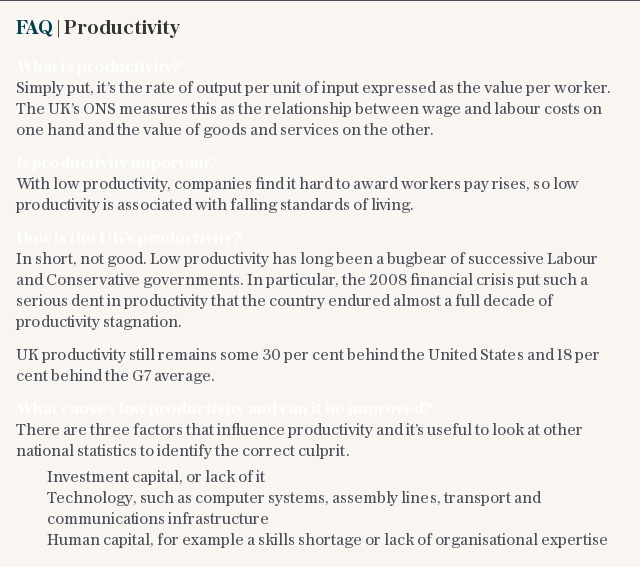Postcode-level productivity study reveals best and worst performing areas in the UK

Sizeable postcode-level disparities in productivity have been revealed by an in-depth study of small businesses in the UK.
West Somerset has emerged as the least productive area for SMEs, with companies based there generating an average of just £56,500 of turnover per employee. This compares with £1.45m in London, meaning small firms in the capital are 26 times more productive than some of their rural counterparts.
The study, a joint venture between Nesta, the innovation charity, and Sage, the cloud computing company, was intended to highlight the stark disparity between regional levels of productivity by gathering and analysing local authority level data.
The UK’s productivity problem has come under intense scrutiny in recent weeks, blamed both for a revision in the Office for Budget Responsibility’s predictions for GDP growth, and stagnant wage growth. Policymakers have made tackling the country’s productivity gap a key focus of the Government’s industrial strategy.

By analysing data at a local level, the study has shown that not only are traditional regional variations in productivity deeply entrenched, but that the gap even between relatively small neighbouring areas is significant.
Northern Ireland’s low productivity levels have long been a concern for politicians, but some local authorities there are bucking the trend. Overall, the region has the lowest rate of SME growth in the UK, at 4pc, compared with 41pc in London, and 16pc in the West Midlands, but the local authority of Mid-Ulster is an outlier, with a turnover per worker of £143,000.
According to the report, this productivity hotspot is the result of intensive efforts by the local authority to encourage enterprise in the area. Mid-Ulster has generated a highly detailed plan for economic development in the area, with a particular focus on micro-firms. Efforts included encouraging small businesses to tender for local government services and a programme of sector-specific business development support.
A spokesman from Mid-Ulster council told The Daily Telegraph that the findings were a result of several actions to boost jobs in the area, including lobbying government for infrastructure improvements and “building strategic partnerships with other bodies to further increase its skills base and entrepreneurship levels”.
Letting firms die is a crucial part of solving the UK’s productivity problem, the report found. Areas with a high churn, or death-rate, for companies are also some of the most productive.
“This churn of business births and deaths, including SMEs, is an important part of the creative destruction that drives wealth creation and productivity,” the report said.

 Yahoo Finance
Yahoo Finance 